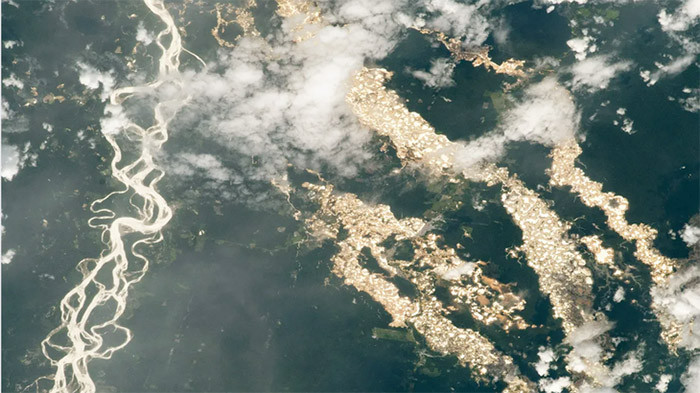As the International Space Station (ISS) drifted over eastern Peru, an astronaut captured images of gold prospecting holes in the Amazon rainforest, the holes reflecting a radiant golden light.

Golden forests in eastern Peru captured by the ISS - Photo: JOHNSON SPACE CENTER
According to NASA's Earth Observatory, hundreds of gold prospecting pits filled with water, surrounded by mud with no vegetation, are clearly visible in the photos.
The worm-like interwoven channels on the left side of the photo are the Inambari River.
These images really show a worrying situation of rampant illegal gold mining in the Amazon rainforest.
This forest area is located in the territories of 9 countries: mainly Brazil (60% of the forest), Peru (13%), and the rest belongs to Colombia, Venezuela, Ecuador, Bolivia, Guyana, Surinam, Guyana.
Gold mining is big business in Peru, the world's sixth-largest producer of the precious metal.
However, some illegal mining operations have devastated local environments and Amazonian communities.
In recent years, a gold rush has emerged in Madre de Dios, a region in the Amazon basin in southeastern Peru that borders Brazil and Bolivia. They exploit the environment recklessly to get their gold.
Along with widespread deforestation, it also causes flooding and water pollution in the surrounding ecosystem.
One of the main concerns is the highly toxic mercury and methylmercury. Illegal gold miners use mercury to separate gold ore from soil and sediment. They often do not take adequate safety precautions.
Mercury is a potent neurotoxin that seeps into lakes and ponds and is then converted by microorganisms into the super toxic chemical methylmercury.
According to Tuoi Tre